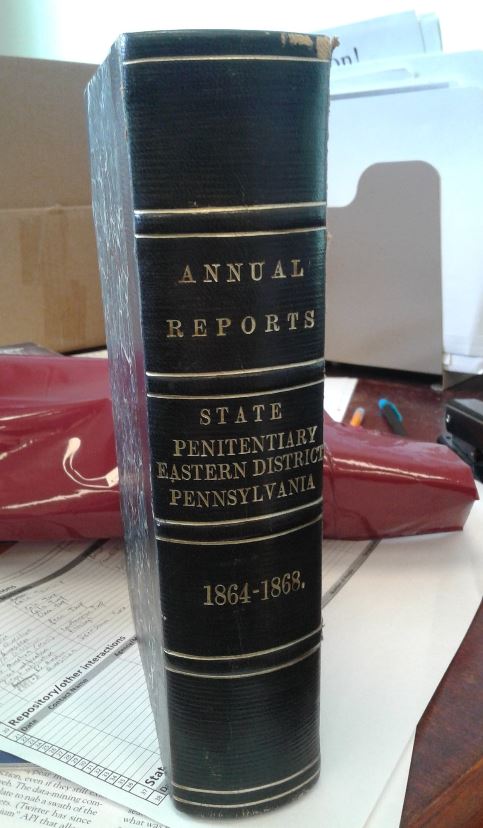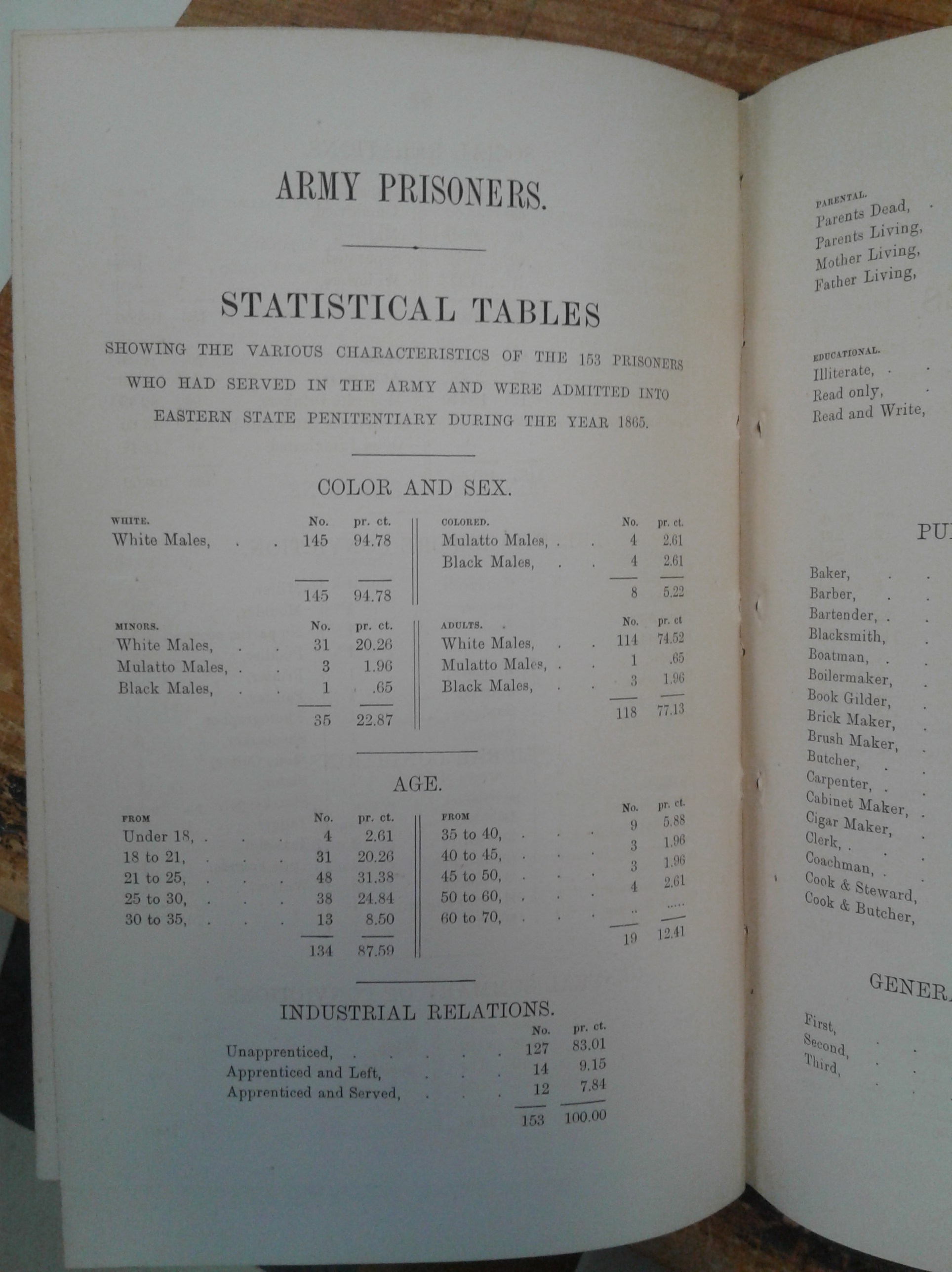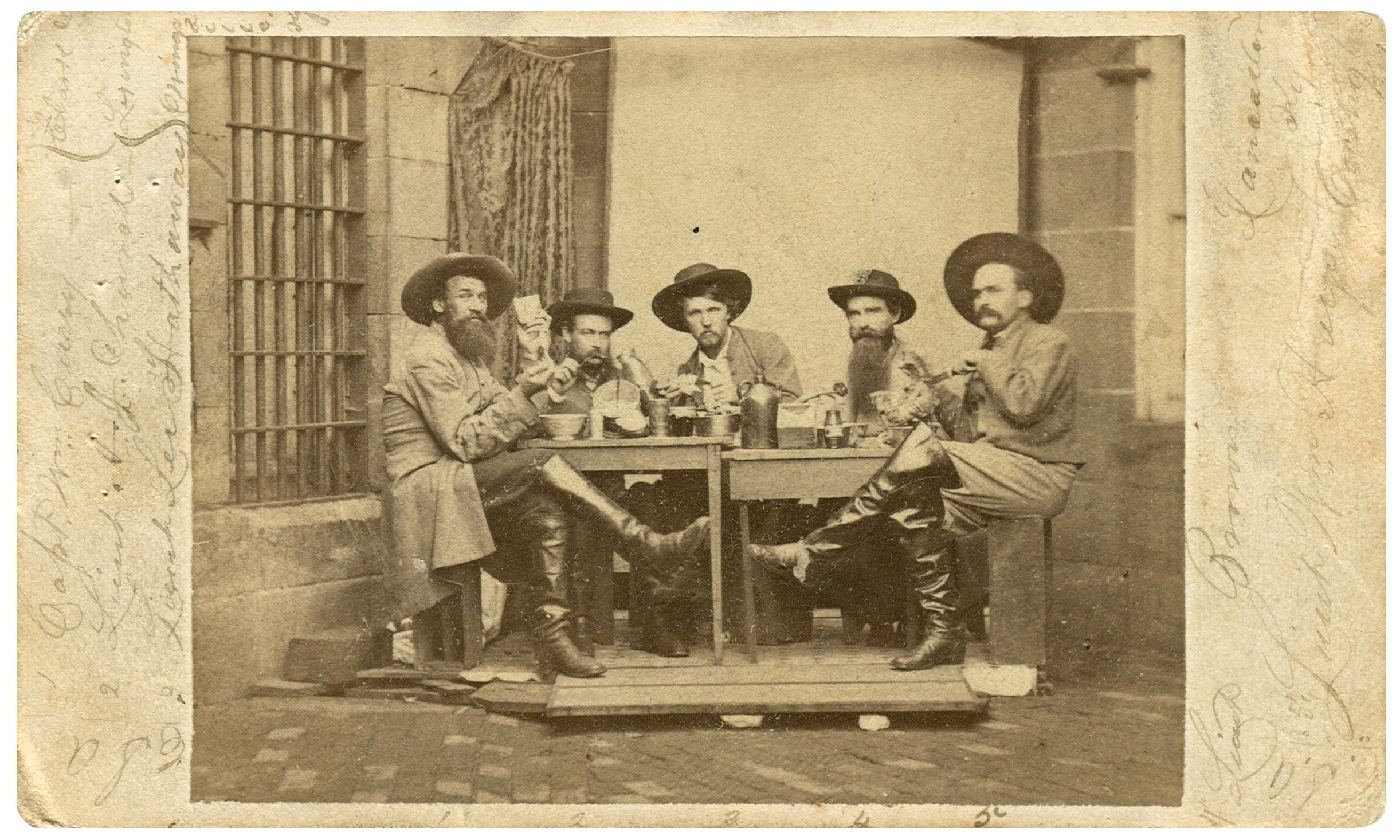 It's an understatement to say that the Civil War was a big deal in Pennsylvania. The conflict touched everyone, soldier and civilian alike. Even for those living far away from Gettysburg and the Maryland border, the war had a deep influence on everyone's daily life. But what about Pennsylvania's state prisons? How did the war change them? A recent acquisition at the State Archives is illuminating how America's deadliest war impacted both inmates and prison staff in Pennsylvania.
It's an understatement to say that the Civil War was a big deal in Pennsylvania. The conflict touched everyone, soldier and civilian alike. Even for those living far away from Gettysburg and the Maryland border, the war had a deep influence on everyone's daily life. But what about Pennsylvania's state prisons? How did the war change them? A recent acquisition at the State Archives is illuminating how America's deadliest war impacted both inmates and prison staff in Pennsylvania.
The State Archives received a bound volume of annual reports dated 1864 to 1868 from the inspectors of Eastern State Penitentiary. In the 1860s, there were only two state-operated prisons in Pennsylvania: Philadelphia's Eastern State Penitentiary and the Western State Penitentiary in Pittsburgh. Each year, both penitentiaries were required to write detailed reports and submit them to the State Legislature and Governor. At a time when state prisons were mostly allowed to operate independently and without oversight from Harrisburg, these reports were used to justify the prisons' annual budgets paid for by the state.
These detailed reports reveal several important changes that occurred during the Civil War years. First, the prison population expanded rapidly. With so many millions of troops stationed in or simply passing through Pennsylvania, it seemed inevitable that some would commit crimes and face arrest. By 1864, Eastern State's staff actually had a special section of statistics in their reports just for inmates who had served in the military. Burglary, larceny and horse theft were the most common crimes that landed more than 150 soldiers in the prison.
The experiences of war followed some of the former soldiers incarcerated at Eastern State Penitentiary. Recently discovered records from the President's Office (currently stored at the National Archives) indicate that several ESP inmates suffered from what would be diagnosed today as PTSD.
One example is medical supply aide Samuel Young. In 1863 he arrived at the Battle of Gettysburg too late to fight but early enough to learn that a brother in the 150th Pennsylvania Volunteers had been wounded, and another in the 56th Volunteers was captured by rebel troops. Young searched high and low for his wounded brother and saw the aftermath of that horrible battle in a hundred medical tents. A few days later he did find his brother: mortally wounded and just days from death. The strain was almost too much for him to bear, and he immediately returned to his home in Philadelphia.
 Young was discharged from service shortly after and became a mail carrier; however, the memories of battle lingered in his mind. In a moment of "temporary insanity" he opened two letters and stole seven dollars from another. He was quickly arrested and sentenced to 10 years at Eastern State. Young had the support of family and friends who reimbursed the post office for the stolen money and wrote to President Abraham Lincoln asking for a pardon. In June 1865 (shortly after Lincoln's assassination), President Andrew Johnson granted him a pardon and Young lived a long and healthy life in Philadelphia.
Young was discharged from service shortly after and became a mail carrier; however, the memories of battle lingered in his mind. In a moment of "temporary insanity" he opened two letters and stole seven dollars from another. He was quickly arrested and sentenced to 10 years at Eastern State. Young had the support of family and friends who reimbursed the post office for the stolen money and wrote to President Abraham Lincoln asking for a pardon. In June 1865 (shortly after Lincoln's assassination), President Andrew Johnson granted him a pardon and Young lived a long and healthy life in Philadelphia.
So many new inmates, like Samuel Young, soon meant overcrowding in Pennsylvania's prisons. Eastern State was originally built to give each inmate their own cells, but by 1863 there were simply too many inmates to do so. Before the war, inmates were given work assignments, like weaving and shoemaking, to complete in their cells. With the overcrowding, this method of work was largely abandoned and reports note that many more inmates were idle than in years past. By the late 1860s, additional cell blocks were built and most inmate industrial work was moved out of cells and into common work areas.
Civil War life at Western State Penitentiary was similar to its Philadelphia cousin, but with one exception—it was a prisoner of war camp, too. In late 1863, more than 100 captured Confederate soldiers and officers were imprisoned at Western State and held there for several months. The men had been known as "Morgan's Raiders" and had been captured near the Ohio border after a long campaign through Kentucky, Indiana and Ohio. At least one soldier died while trying to escape, and the rest were moved to a federal prison camp in New Jersey shortly after.
 Both Eastern and Western State Penitentiaries suffered from decreased funds and loss of staff who enlisted in the armed forces. Nevertheless, remaining prison officers and wardens managed to handle the new challenges of war in their institutions remarkably well. Just reading the annual reports from Eastern State, it is difficult to tell there was a war going on. There are very few mentions to war or hardships faced by the institution. In 1865, the superintendent wrote that, "The year just passed, has presented no feature beyond the ordinary routine of prison life, except in the large accession to our population which has taken place within the last few months."
Both Eastern and Western State Penitentiaries suffered from decreased funds and loss of staff who enlisted in the armed forces. Nevertheless, remaining prison officers and wardens managed to handle the new challenges of war in their institutions remarkably well. Just reading the annual reports from Eastern State, it is difficult to tell there was a war going on. There are very few mentions to war or hardships faced by the institution. In 1865, the superintendent wrote that, "The year just passed, has presented no feature beyond the ordinary routine of prison life, except in the large accession to our population which has taken place within the last few months."
The State Archives is very lucky to have this new collection of annual reports. The amount of detail recorded in each year's issue is incredible and are a goldmine for any researcher interested in this time period. In 1864 one ESP writer even boasted that these reports "present more information, on penal science, or data from which penal science can be studied, than any other like institution in the country." These reports, and many other Civil War-era records like them, are currently available for public viewing at the Pennsylvania State Archives.
Does your SCI have historical records that tell the story of the Department of Corrections? The State Archives in Harrisburg collects and preserves historical records and photographs from correctional facilities to preserve them for future generations of Pennsylvanians. If you have any historical records like ledgers, newsletters, photos, or scrapbooks related to the Department of Corrections, contact your agency Record Coordinator, Launa Kowalcyk (717) 728-4058 or Archivist Tyler Stump (717) 783-9874.
The Pennsylvania State Archives is home to more than 250 million pages of historical records dating from the 1600s to the present day. To learn more please visit the archives website: www.phmc.pa.gov/archives